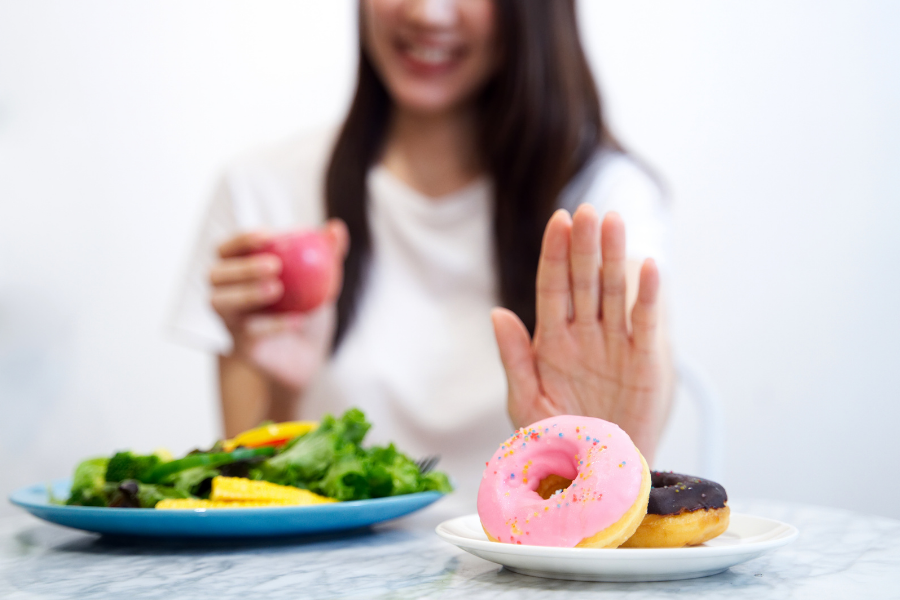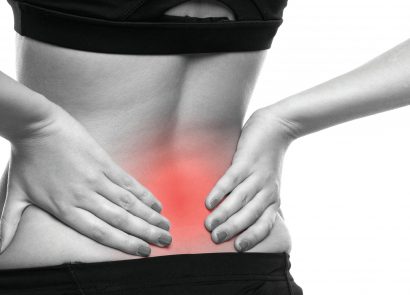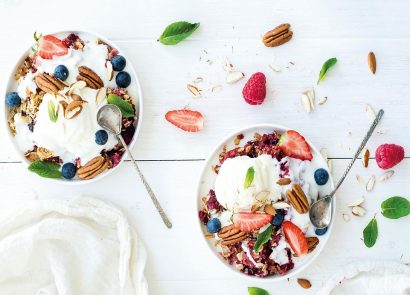Do you know how much sugar you should be having?
64 percent of the UK is worrying about our sugar habit, but only three-in-ten of us actually know how much we can safely consume, according to data from a survey commissioned by sweetener brand Hermesetas. With so many Brits struggling to keep up their diets, is it time we learn more about our favourite sugary treats? Rhiannon Bevan investigates.
The data from Hermesetas suggests that, although concerned about their health, Brits are being tripped up by a lack of understanding about our sugar habit. Our daily recommended intake of sugar is just seven teaspoons a day. However, according to data from the government-commissioned national diet and nutrition survey, adults in the UK are consuming a staggering 222 percent of their recommended amount of energy.
Worst yet, primary-school children are getting 270 percent of their limit. In fact, by their tenth birthday, children on average have had 18 years’ worth of sugar.
So are we just not trying? Not at all – the data also shows that two in three adults have in fact tried dieting in the past. The issue appears to be that we can’t maintain them. 51 percent of those who’ve tried to diet failed after a week. Out of those who lost weight, 89 percent put it all back on after they stopped dieting.
Check your sugar intake
What we need to do, according to nutritionist Dr Emma Derbyshire, is start checking the amount of sugar in our food and drinks, even if we think they’re healthy. For example, putting honey in your tea rather than sugar might not be as healthy as you think. “Although honey may contain some additional antioxidants, it is essentially sugar. In terms of weight control, and its impact on blood-sugar levels, it is just as challenging as white or brown sugar.”
Dr Emma also says we need to check what’s in our ready meals and breakfast cereals. These can often be the biggest contributor to going over our sugar limit. Government data suggests that almost 10 percent of our daily intake comes from seemingly healthy breakfast cereals.
But is it really so worrying? Despite our lack of understanding, the data actually shows that the biggest reason we slip up on our diets is lack of willpower… not ignorance as to what’s in our favourite snacks.
According to the NHS website, ‘fad diets’ or ones that cut out carbs, claim to provide quick results. Yet often there’s ‘little or no evidence to back up these diets’, and they can be ‘difficult to keep to in the long term’. They suggest decreasing the number of calories you consume by swapping for healthier alternatives. These include skimmed milk and low-fat yoghurts.
Despite what some diets recommend, the NHS claims that those looking to lose weight should have breakfast. Their low sugar solutions include porridge, scrambled eggs and homemade breakfast bars. A sugar detox could also work for you.
Am I a sugar addict?
Is it time to have a word with your sweet tooth? Eating disorder therapist Molly Carmel reveals the sour truth about our sugar habit.
The first step of breaking free from this toxic relationship is to learn the bitter truth. You’re not crazy for loving sugar – the minute your mother gave you milk to soothe you, this relationship got complicated. The safety and security of sugar goes back to the days of hunting and gathering. Back then, we needed energy fast – and sugar is the fastest and most easily broken down nutrient. We associate sugar with celebration and love. The problem is, your relationship may have taken a nasty turn.
The not-so-sweet effects of a sugar habit
We know a sugar habit affects your vanity: weight gain, belly fat, breakouts, skin irritation, wrinkles, aging skin, tooth decay, and hair loss. But sugar also negatively affects every single part of your body. Some of these harmful effects are more well known than others. Eating sugar has been linked to inflammation, migraine headaches, anxiety, brain fog, sleeping problems, weakened eyesight, gum disease, heart disease, increased cholesterol, asthma, suppressed immunity, kidney damage, non-alcoholic fatty liver, overworked pancreas, arthritis, osteoporosis, metabolic syndrome and leptin resistance. There’s even terrifying research showing that sugar increases the risk of developing cancers. And of course, let us not forget sugar’s pièce de résistance: glucose intolerance and diabetes.
How did I get addicted to sugar?
You may be thinking: how did it get this bad? Why can my best friend have a bite and walk away from the cupcake, while I want a dozen more? Your relationship with sugar has gone haywire for a whole host of reasons: the nature of sugar itself, the nature of your environment, and the nature of you. These issues are annihilating your relationship with food and fuelling your attachment (and maybe your addiction) to sugar. No two people are impacted in exactly the same way. This is what makes the whole concept of addiction so complicated. But, we are on the road to a permanent, sustainable solution. The first step is to simply become informed about why you’re craving sugar to begin with.
The manufacturing of sugar
Look at pictures from the 1950s and you’ll see people drinking soda and eating cookies like it’s no big deal. And it wasn’t, really. So, what happened? Today, our food is specifically designed with highly concentrated sugar and minimal amounts of fibre and protein. To put it lightly, our sugar got turbocharged. It activates your brain’s reward pathways with an intensity and magnitude that nature never would have dreamed of intending.
What’s more, this new-millennium high-potency sugar is everywhere. It’s in places we would expect – cookies, cakes, breads and sweets. It’s also hidden in our peanut butter, salad dressing, protein bars, sauces, deli meats, tomato sauce, and just about every highly processed food you can get. The truth of the matter is that we’re eating sugar, knowingly and unknowingly, all day, every day. The food we eat today has been designed and manipulated to make eating healthily and intuitively nearly impossible. It’s no wonder so many people struggle with listening to their hunger and fullness cues – the foods we’re ingesting are deliberately processed to override that system.
The link between a sugar habit, sleep and stress
The way we live and eat is the farthest thing from intuitive, so why do we expect our relationship with food to be that way? We are sleeping less, working more, and taking worse care of ourselves as a result. In this state, not only are we more susceptible to craving the sweetness, comfort, and instant energy burst that sugar gives, it also makes us more vulnerable to wanting more. Brain Imaging studies show that people who sleep less have greater desire and craving for highly caloric foods. What’s worse, they find these foods to be more pleasurable, which only increases sugar’s grip.
It’s not just lack of sleep that makes us eat more, it’s also stress. When we’re glued to our phones, our attention is demanded at all times. This causes cortisol, our stress hormone, to kick into overdrive, as though you were in fight or flight mode 24/7. While in the short-term, stress can suppress your desire to eat, when your body is under stress for prolonged periods, cortisol floods your system, increasing your appetite. When we’re stressed, we eat more and inevitably gain more weight. And it’s not just any foods that we crave; it’s the high sugar foods that – in the short term – counteract our stress response and boost our mood.
You might think the answer is more willpower, but it isn’t. Willpower is a limited resource that we use constantly throughout the day – going to work, making decisions, fulfilling obligations, saying no to the cookies. By the end of the day, our willpower has been sapped dry and we are cued for a reward. It’s now when we’re most likely to break that promise we made to ourselves to ‘be good’ and reignite our affair with our sugar habit. So the answer isn’t more willpower, it’s about planning, creating new habits and mastering skills that help to boost your willpower when life gets tough.
Why do I keep eating sugar?
The main reason you can’t stop eating is that sugar has hijacked your brain – studies have shown that sugar dependence looks like other addictive substances like alcohol, cocaine and opiates. It alters your brain, nervous system, and endocrine system. Sugar floods the brain with dopamine; a neurotransmitter responsible for ‘wanting’ and ‘liking’. So when our brain is constantly flooded with dopamine, as it is when we are misusing sugar, we’re more driven to seek out than we are to enjoy. Dopamine affects decision-making, memory, and learning centres, training us to seek out sugar. Cravings are powerful and motivate us to choose sugar again and again, without regard for the harmful effects to our body, self-esteem, and relationships.
The problem is that with prolonged exposure to sugar, you’re dimming your ability to experience pleasure. Chances are, you need a lot more sugar now to get the same feeling you had when you had your first bite of ice cream as a kid. That’s because as you eat more sugar and your brain floods with more dopamine, your dopamine receptors begin to thin out. That means progressively more sugar is needed to achieve that feeling. Now that you have built up a tolerance to sugar, it affects your brain much less than someone who doesn’t eat it at all. I’ve had so many clients point out in amazement how, after they broke up with sugar, fruit tastes like a flavour explosion.
When you eat sugar, your body floods with insulin; a hormone created in the pancreas. Insulin’s job is to regulate your blood-sugar levels and allow sugar to enter your cells to give you energy. However, when we give into that sugar or food craving, all that insulin begins to block leptin, the satiety hormone.
When leptin is blocked time and time again, we can no longer feel full. To make matters worse, excess insulin triggers our body to stop burning and start storing fat. With less sugar in your body and insulin levels back to normal, you put yourself in a better position to stop overeating and release unnecessary weight. So many of my clients are in awe of how much faster they feel full and satisfied when finishing a meal; something they never thought possible.
For more, read Breaking Up With Sugar: A Plan to Divorce the Diets, Drop the Pounds and Live Your Best Life.
What are hidden sugars and how do they impact a sugar habit?
Natural, added and refined: there are many different ways to describe the sugars that occur in our food, but with the increasing range of snacks on offer that claim to be healthy, it can still be a confusing topic. We’ve enlisted the help of the experts to reveal five hidden sugars which could be sneaking their way into your diet and contributing to your sugar habit.
“Put simply, sugar is sugar, whether it comes from dates or the classic white granules,” says Gudrun Jonsson, the author of the international bestseller, Gut Reaction and dietary adviser to Nibble Protein.
The NHS recommends that free sugars – sugars added to food or drinks – should not make up more than 5 percent of the energy (calories) you get from food and drink each day. Free sugars are contained in things like smoothies, plant milks and energy bars.
Keep this in mind when you’re reaching for your next snack bar. Many of them are branded to give you more energy and protein, and can be great post-exercise. But because a lot of them are processed to enable a long-life, chances are that these processed foods will be loaded with added sugar, boosting your energy levels… but also your blood sugar levels. Here are just a few of the hidden sugars to be mindful of.
Agave syrup
Agave is a high fructose syrup made from the Mexican tequila plant. Fructose is one and a half times sweeter than table sugar, so less of it needs to be used to sweeten foods. However, fructose is not easily metabolised by the body, so it has to be processed by your liver to convert it into energy. When the liver is overloaded, it starts to turn the fructose into fat globules.
Brown rice syrup
This seemingly healthy-sounding sweetener is actually a processed high glucose syrup that is used in many popular protein bars and balls. Brown rice syrup has a staggering GI of 98 which will send your blood sugar skyrocketing (and will make you hungry again not long after eating it). It’s best avoided unless you are in need of an immediate energy boost during very high-intensity exercise, and you need to raise your blood sugar level.
Dates
Dates seem to appear in just about every recipe, and they are the cornerstone to many all-natural sweet treats. They have a relatively low GI ranging from 42-62 depending on the variety and are high in fibre, potassium and polyphenols. But be mindful that they are very high in sugar (they are made up of 66 percent sugar), so use them in moderation. If you do use dates, try to go for organic options because some dates contain sulphites.
Malitol
Malitol is a very popular wood alcohol sweetener cropping up in many low sugar products. It is about 90 percent as sweet as sugar but it contains a little over half the calories. Malitol is safe in small quantities, but in higher doses it can lead to digestive symptoms, such as stomach aches, wind and bloating.
Stevia
You’ll find stevia in a lot of keto products because it contains no carbs, no calories and it’s 200 times sweeter than sugar. But the taste appears to be the biggest drawback – many find it bitter or ‘metallic-tasting’. But, if you are going to use it, make sure you are using 100 percent pure leaf stevia.
Here’s what a sugar habit can do to your skin
We’re all aware of the effects that sugary food can have on our teeth and our waistlines, but what sugar is actually doing to our skin is still a grey area. This year, new research surfaced that soft drinks – even the sugar-free kind – could lead to risk of a premature death.
So, if we’re going to curb our sugar habit for our health, should we be doing the same for the benefit of our skin? Tammy Richards, a skin and health specialist at PureOptical reveals the impact that sugar can have on our complexion, and the steps we need to take for a crystal clear glow.
Acne
“Fizzy soft drinks, white bread and white rice are regarded as ‘high’ on the glycaemic index. The glycaemic index refers to food that rapidly transforms into glucose once digested and in turn, raises the body’s insulin levels. This is known as the glycation process. It’s the glycation process that results in inflammation of the skin and can trigger conditions such as acne.
“A diet that contains an exorbitant amount of sugar can reduce the function of the body’s white blood cells, which are responsible for combating infection. Their suppression paves the way to the perfect environment for acne, as bacteria evolves within the layers of the skin. The sudden increase of inflammation also causes a spike in the body’s hormone levels, which in turn leads to further breakouts.
“Excessive sugar travels to your gut and enters the bloodstream once processed. This is bad news for rosacea and psoriasis sufferers, as excessive consumption of refined sugar can spark the conditions and cause ongoing flare-ups.”
Skin aging
“Several studies reveal that a sugar habit accelerates the signs of aging, as it breaks down elastin and collagen in the skin. Excessive amounts of sugar leads to the skin becoming dry, dull and even sagging, which is ultimately the result of glycation.
“Throughout the glycation process, a matter called advanced glycation end (AGE) is produced, which is incredibly damaging to the body’s proteins as they work to destroy elastin in the skin along with collagen.
“Studies have shown that people who have been diagnosed with diabetes tend to age faster than those without the disease because they consistently have trouble controlling their blood sugar levels.”
How can I reduce the impact of a sugar habit on my skin?
- Aim to consume complex carbohydrates, such as vegetables and brown rice. These transition to glucose at a slower rate than refined sugars and therefore do not cause a spike in insulin.
- Adopt a Mediterranean diet that includes oily fish and healthy fats, such as olive oil, as they work as an anti-inflammatory and will therefore help to combat breakouts.
- Keep stress levels to a minimum, as stress hormones cause outbreaks that can be very stubborn.
- The fastest way to reduce the impact that sugar has on the skin and body is to keep track of how much you are eating. You don’t have to label-watch, but sometimes people are very surprised at how much sugar they consume when they begin to take notice.
- Looking to switch-up your skincare routine? Why not make it vegan? It’ll reduce your impact on the environment, with kinder ingredients for your face.
How to cut back on refined sugar to help with your sugar habit
Here’s a scary home truth – children today are having eight excess sugar cubes a day (that’s 2,800 a year), according to the latest data from Public Health England.
By the age of 10, many kids have consumed a whopping 18 years’ worth of sugar. And further data shows that teens fare no better, with many believed to drink a ‘bathtub full’ of sugary drinks each year.
The focus from Public Health England’s campaign, Change4Life, is on helping families to make healthier choices and sensible sugar swaps. But what could you be doing to reduce your family’s sugar intake? Dr Emma Derbyshire reveals 10 ways you can cut back on consumption today.
Ditch the sugary drinks
Sugar-sweetened drinks are targeted from all bases when it comes to obesity. Sugar tax and campaigns to switch from high sugar drinks are all around us. Swapping a regular Coke, which has seven teaspoons of sugar and 140 calories per 330ml can, for a Diet Coke, which has no sugar and no calories per 330ml, will cut seven teaspoons of sugar and 140 calories. Choose diet drinks and low-calorie cordials or stick with refreshing tap water.
Sugary cereal offenders
Breakfast is the most important meal of the day, but some cereals are almost 50 percent sugar – and many children and adults sprinkle extra sugar on to less sweetened cereals. Granola is often seen as a healthier option because it is more likely to contain natural sugars such as honey but, when it comes to calories, these can still add up. Switch to low-sugar cereals and, if you must add sugar, try a sprinkle of low-calorie granulated sweetener.
Cut back on desserts
The most obvious place for high sugar is in sweet treats and desserts, so this is the easiest way to cut back. If you have a sugar habit, try swapping your usually sugary dessert or indulgent yoghurt for natural yoghurt and fruit with some Hermesetas Liquid, which will satisfy your sweet tooth without the sugar intake – and help towards your five-a-day.
Be mindful of your snack attacks
How many of us crave a bit of chocolate? Probably most of us. Instead of reaching for chocolate, which has around 240 calories per 45g bar, you can make energising chocolate balls using sweetener, which have half the calories for the same size serving. If this is a twice-a-week treat, the swap could save you 6,240 calories and help you shed almost 2lbs.
Check food labels
Products are not always what they seem. When shopping, be sure to check product labels to see if there is any hidden sugar. Also, check out the traffic light system on food packaging. Anything in red for sugars will mean that it is more than 22.5g of total sugars per 100g. Remember, an adult and teenager’s maximum intake is 30g a day!
Avoid sugar in tea and coffee
There’s nothing better than sitting down with a good old cup of tea or coffee. Sugar is best avoided but, if you do add sugar to your drink of choice, swap it for an alternative such as a sweetener. Assuming you add one teaspoon of sugar, and have two cups per day, this swap means you cut back 7,280 calories in six months.
Want some more tips to find out how to curtail your sugar habit? You’re in the right place: read our 7 ways to beat sugar cravings.




















